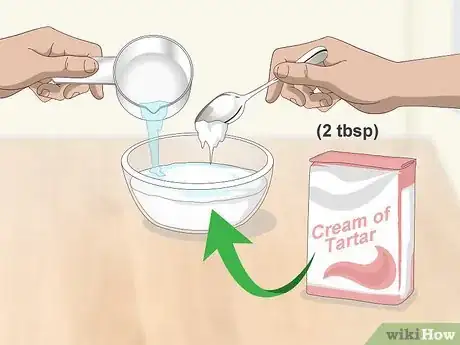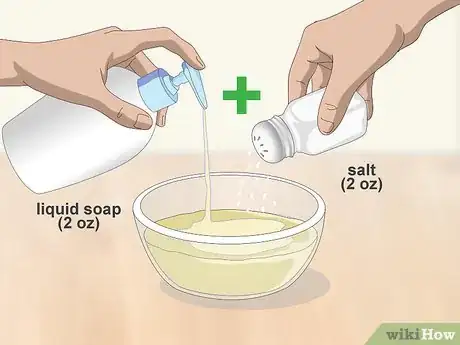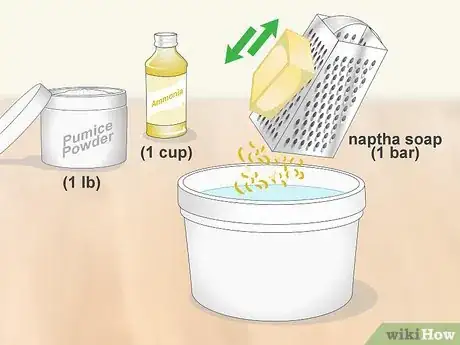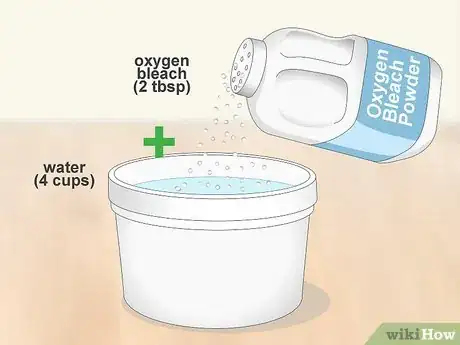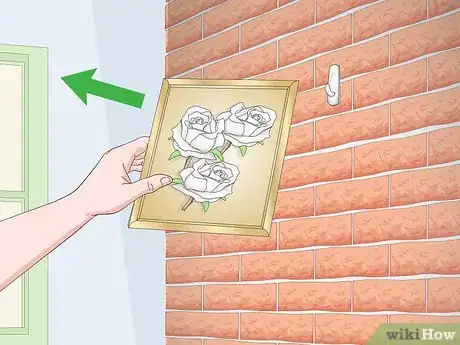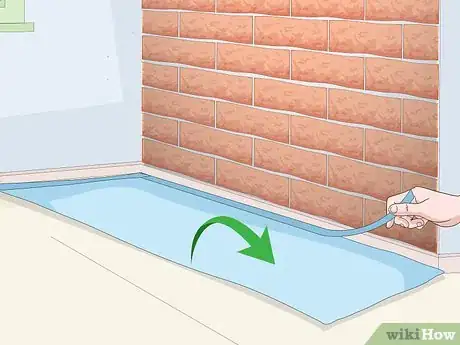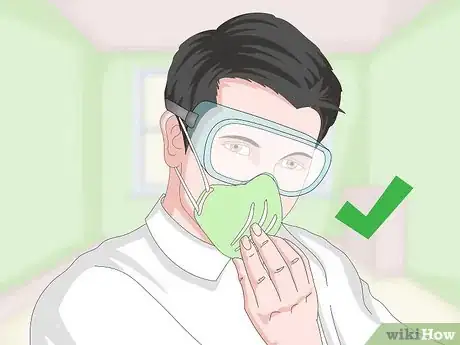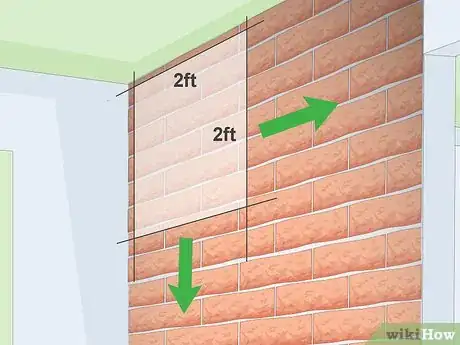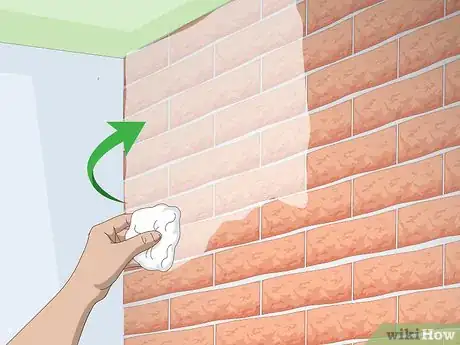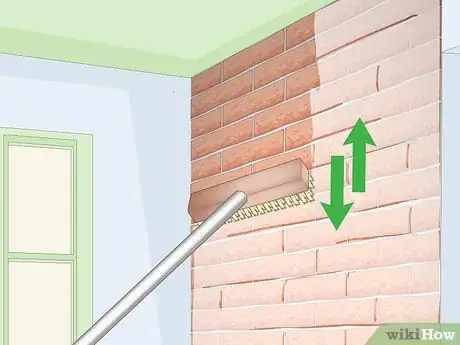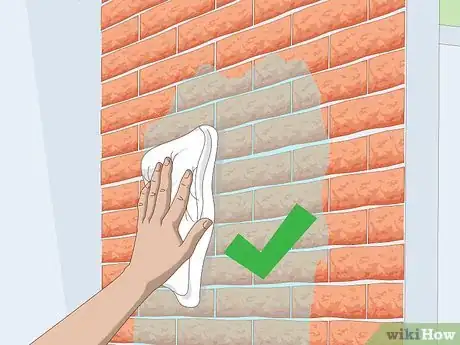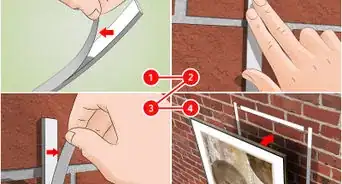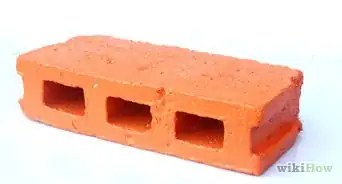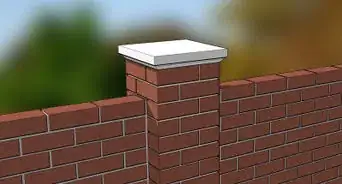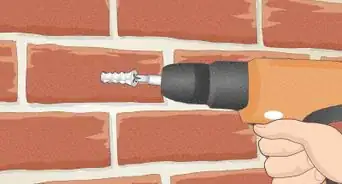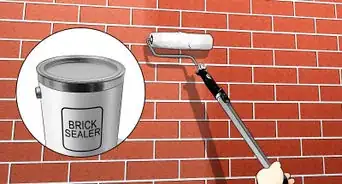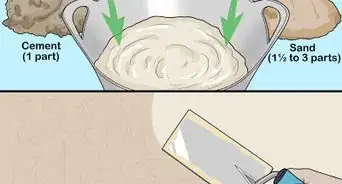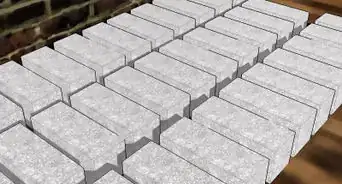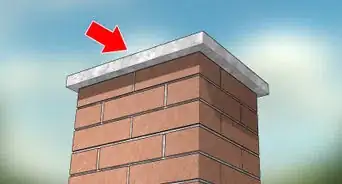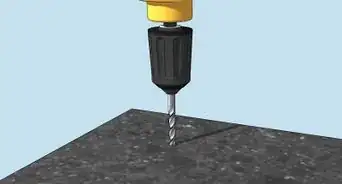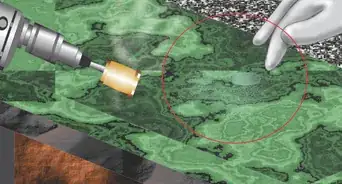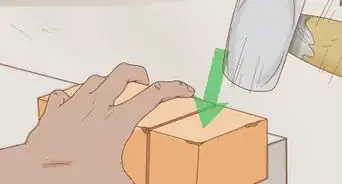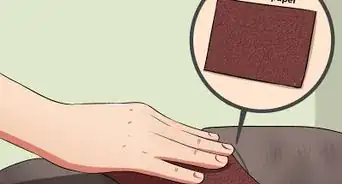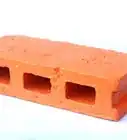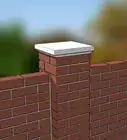This article was co-authored by Melanie Garcia. Melanie Garcia is the Co-Owner of Oranges & Lemons, a small, family cleaning business based in Downtown Los Angeles, California (DTLA) in operation for over 40 years. Oranges & Lemons operates while partnering with the National Domestic Workers Alliance and Hand in Hand: Domestic Employers Network.
There are 9 references cited in this article, which can be found at the bottom of the page.
This article has been viewed 71,053 times.
Brick is a common material used in homes for both interior and exterior surfaces, such as fireplaces, walls, patios, and walkways. Over time, brick can become dirty because of soot, mold, hard water, algae, mud, and other elements. It is possible to clean dirty bricks using homemade cleaners and everyday products, and there are many different recipes you can experiment with. No matter what cleaner you use, the key to cleaning brick is plenty of scrubbing.
Steps
Making Brick Cleaners
-
1Combine cream of tartar and water to make a cleaning paste. In a small bowl, combine 2 tablespoons (20 g) of cream of tartar with enough water to make a thick paste. Stir them together to completely incorporate the two ingredients. To make larger quantities, add more cream of tartar and water and mix it into a paste.[1]
- Cream of tartar, otherwise known as potassium bitartrate, is an acidic by-product of winemaking that can be used to clean and scrub metal, ceramic, stone, and other surfaces.[2]
- This paste is good for scrubbing soot and fireplace buildup from brick.
-
2Make a soap and salt paste. In a small bowl, combine 2 ounces (59 ml) of liquid dish soap and 2 ounces (57 g) of salt. Mix them together to make a paste. Add just enough water to make the mixture creamy and spreadable. The cleaner should have the consistency of paint or pancake batter.[3]
- To make larger quantities, mix equal parts soap and salt, by weight, in a larger container. Add enough water to make the mixture spreadable.
- In this cleaner, the salt will act as an abrasive, and the soap will wash dirt and grease from the bricks.
Advertisement -
3Mix ammonia with soap and pumice. In a small bucket, combine 2 tablespoons (30 ml) of liquid dish soap, 1 tablespoon (15 ml) of ammonia, and 1 tablespoon (9.5 g) of pumice powder. Add hot water in small increments, until you can stir the mixture into a loose paste.[4]
- Pumice powder is a mild abrasive that can be purchased in art stores, craft shops, and beauty supply stores.
- Never mix ammonia with bleach or other cleaners.
-
4Try a naphtha soap and ammonia solution. Use a cheese grater to grate a bar of Fels-Naptha soap into a medium bucket. Add 12 cups (2.8 L) of boiling water and stir the mixture until the soap is dissolved. Set the mixture aside to cool for at least an hour. Add 1 cup (235 ml) of ammonia and 1 pound (454 g) of pumice powder to the bucket. Stir the mixture to fully combine all the ingredients.[5]
- Fels-Naptha soap is a powerful laundry soap that’s often used to pretreat stains.
- This is a heavy-duty cleaner that will kill mold, and scrub soot and buildup from brick.
-
5Combine oxygen bleach powder with water. In a large bucket, combine 2 tablespoons (30 ml) oxygen bleach with 4 cups (940 ml) of water. Stir the mixture for a few minutes to dissolve the oxygen bleach in the water.[6]
- Oxygen bleach is different from chlorine bleach, and it’s not as corrosive or damaging.
- This cleaner is good if you need to remove mold or mildew from brick, because the oxygen bleach will kill the mold.
Pre-Cleaning the Brick Surface
-
1Clear the surface. Before you can start cleaning your brick surface, it’s important to remove any items that might be in the way. For brick walls, remove pictures and nearby furniture. For mantles and fireplaces, clear away decorations and fire tools. For brick walkways, remove carpets, planters, or anything on the ground.
-
2Protect the surrounding areas. Cover the ground with a drop cloth or tarp. Inside, tape the edges to the baseboard to protect the floor below. Outside, tape the drop cloth to the base of the wall or side of the walkway to cover the patio or grass. Cover nearby furniture or personal items with a drop cloth to keep them protected from dust and spills.[7]
- Some of these cleaners aren't safe for children, pets, or plants, so it’s important to cover outdoor areas as well.
-
3Put on personal protective equipment. You may want to wear a mask and safety glasses to protect your lungs and eyes from dust, soot, and other airborne particles. You may also want to wear rubber gloves to protect your hands, depending on the cleaner you're using.[8]
- If you're working with ammonia or bleach, always protect your hands with rubber or latex gloves and work in a well-ventilated area.
-
4Scrub the brick with a dry stiff-bristled brush. Apply medium pressure as you scrub the dirty brick with the brush. For smaller areas, an old toothbrush will do, but you'll want a larger brush to clean bigger areas. Scrubbing will help to loosen dirt and other particles from the brick, and make the surface easier to clean.[9]
- Don’t use a brush with metal bristles, as these can scratch the brick.
- Avoid pressure washing the surface, because the pressure can damage the mortar between the bricks.[10]
-
5
Scrubbing the Bricks with Cleaner
-
1Start at the top and work in small sections. For walls, start at the top left corner and work in small sections that are about 2 by 2 feet (61 by 61 cm). Once you’ve scrubbed and rinsed that section, move to the right and clean the next section over. When you reach the right corner, move down and work your way back to the left. For walkways and narrow brickwork, start at the top and work down in sections.
- Cleaning the brick this way will prevent you from getting fresh dirt on brick you’ve already cleaned.
-
2Apply cleaner to the brick. To apply a paste-style cleaner, dip a rag into the paste and use the rag to rub the paste onto the dirty brick. To apply a thick liquid cleaner to walls, dip a clean paint brush into the cleaner and apply it to the brick with the brush. To apply liquid cleaners to a wall, soak a rag in the liquid, and soak the brick with the rag. To clean an exterior floor surface with any liquid cleaner, pour the liquid onto the affected area.
- Paste-style cleaners include the cream of tartar paste.
- Thick liquid cleaners include the salt and soap cleaner, and the ammonia with soap/Fels-Naptha and pumice.
- Liquid cleaners include the oxygen bleach and water mixture.
-
3Let the mixture sit for 10 minutes. This will give the cleaner time to soak into the brick and absorb dirt, soot, and other particles.[13] For the ammonia and pumice mixtures, leave the mixture on the wall to dry fully, about an hour, before scrubbing it off.
-
4Scrub the brick with a brush. Once the cleaner has had time to soak into the brick, use a clean stiff-bristled hand-held brush to scrub soiled wall areas. For dirty brick floors and walkways, use a clean broom with hard bristles to scrub the surface.[14]
-
5Rinse the brick clean. When the soiled brick has been thoroughly scrubbed with the cleaner of your choice, rinse the area with clean water. For outdoor surfaces, use a garden hose to spray the wall or floor. For indoor surfaces, wipe the area with a clean cloth that’s saturated with water.[15]
- Once you’ve rinsed the brick, allow it to air dry.
Expert Q&A
-
QuestionHow do you clean brick walls?
 Melanie GarciaMelanie Garcia is the Co-Owner of Oranges & Lemons, a small, family cleaning business based in Downtown Los Angeles, California (DTLA) in operation for over 40 years. Oranges & Lemons operates while partnering with the National Domestic Workers Alliance and Hand in Hand: Domestic Employers Network.
Melanie GarciaMelanie Garcia is the Co-Owner of Oranges & Lemons, a small, family cleaning business based in Downtown Los Angeles, California (DTLA) in operation for over 40 years. Oranges & Lemons operates while partnering with the National Domestic Workers Alliance and Hand in Hand: Domestic Employers Network.
Professional House Cleaner To remove dust from an interior brick wall, vacuum the wall using a curtain attachment. This method should remove dust from the bricks. You may need to clean the attachment frequently depending on the level of dust. An exterior brick wall can usually just be sprayed down with a water hose.
To remove dust from an interior brick wall, vacuum the wall using a curtain attachment. This method should remove dust from the bricks. You may need to clean the attachment frequently depending on the level of dust. An exterior brick wall can usually just be sprayed down with a water hose. -
QuestionI am going to paint brickwork. Is it OK to use oxygen bleach to clean the surface before painting?
 Suhas MukherjeeCommunity AnswerOxygen-based or all-fabric bleach is a gentle bleaching agent that removes stains, whitens, and brightens, and it is safe for use on brickwork. Because of its chemical ingredients, it works more slowly than chlorine bleach, is less corrosive and damaging to fibers, and is more environmentally-friendly.
Suhas MukherjeeCommunity AnswerOxygen-based or all-fabric bleach is a gentle bleaching agent that removes stains, whitens, and brightens, and it is safe for use on brickwork. Because of its chemical ingredients, it works more slowly than chlorine bleach, is less corrosive and damaging to fibers, and is more environmentally-friendly.
Things You'll Need
Cream of Tartar Cleaner
- Cream of tartar
- Water
- Small bowl
Soap and Salt Paste
- Liquid dish soap
- Salt
- Small bowl
- Spoon
Ammonia, Soap and Pumice Cleaner
- Small bucket
- Liquid dish soap
- Ammonia
- Pumice powder
- Spoon
Naphtha Soap and Ammonia Solution
- Cheese grater
- Fels-Naptha soap
- Medium bucket
- Spoon
- Boiling water
- Ammonia
- Pumice powder
Oxygen Bleach Cleaner
- Large bucket
- Oxygen bleach
- Water
- Spoon
For Cleaning
- Drop cloth
- Tape
- Mask
- Safety glasses
- Rubber gloves
- Stiff-bristled brush
- Vacuum
- Rag
- Water
References
- ↑ http://www.apartmenttherapy.com/how-to-clean-a-brick-fireplace-with-all-natural-cleaners-apartment-therapy-tutorials-216668
- ↑ http://dish.allrecipes.com/cream-of-tartar/
- ↑ http://www.housecleaningcentral.com/en/cleaning-tips/cleaning-products/brick-cleaning-solution.html
- ↑ http://www.howtocleanstuff.net/how-to-clean-brick-2/
- ↑ http://www.oldhouseweb.com/how-to-advice/home-remedies-clean-fireplace-brick.shtml
- ↑ https://www.youtube.com/watch?v=WElUX26LmQI
- ↑ http://www.diycentral.com/how-to-clean-fireplace-brick-301/
- ↑ http://www.apartmenttherapy.com/how-to-clean-a-brick-fireplace-with-all-natural-cleaners-apartment-therapy-tutorials-216668
- ↑ http://www.diycentral.com/how-to-clean-fireplace-brick-301/
- ↑ https://www.youtube.com/watch?v=WElUX26LmQI
- ↑ http://www.housecleaningcentral.com/en/cleaning-tips/cleaning-products/brick-cleaning-solution.html
- ↑ Melanie Garcia. Professional House Cleaner. Expert Interview. 10 October 2019.
- ↑ https://www.youtube.com/watch?v=WElUX26LmQI
- ↑ http://www.housecleaningcentral.com/en/cleaning-tips/cleaning-products/brick-cleaning-solution.html
- ↑ https://www.howtocleanthings.com/surfaces/how-to-clean-brick/
